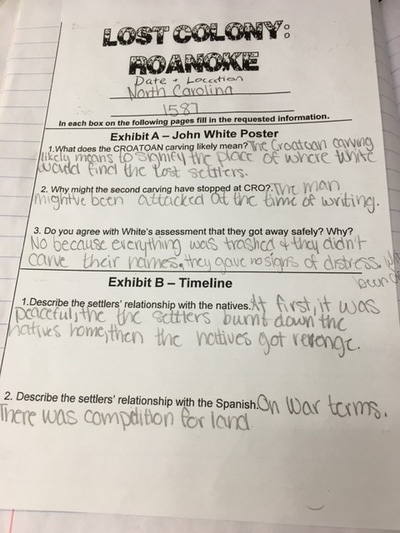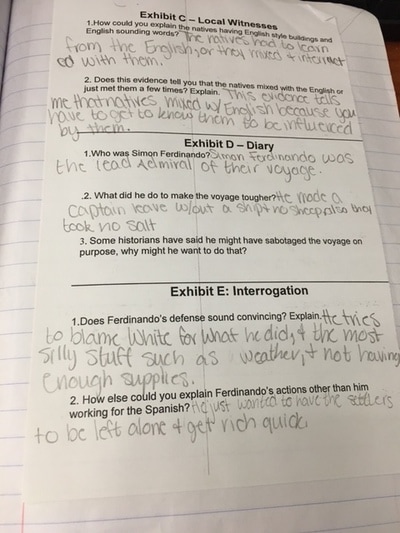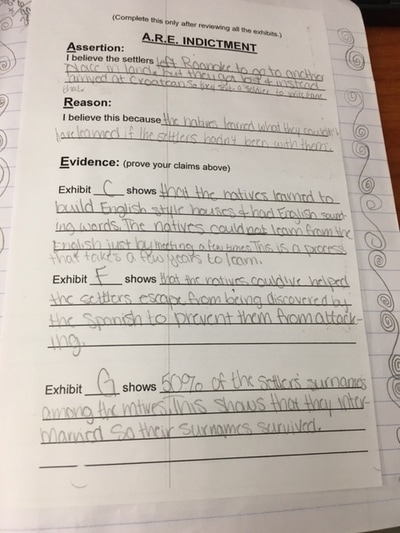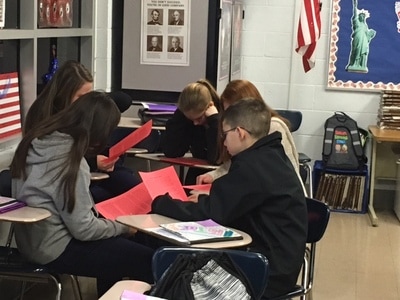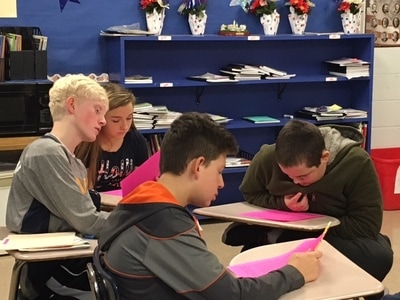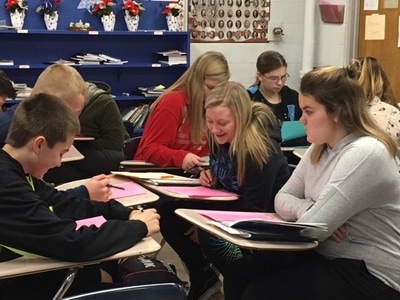Historical Thinking Leads to Inquiry Based Learning
The first step in creating an inquiry based learning environment is to help students develop critical thinking skills to analyze primary sources. My plan was to begin the school year with students learning how to analyze a variety of primary sources such as photos, letters, diaries, and political cartoons then to gradually make the historical analysis more difficult. I primarily used materials commonly available through the Stanford History Education Group and the National Archives to help guide student analysis.
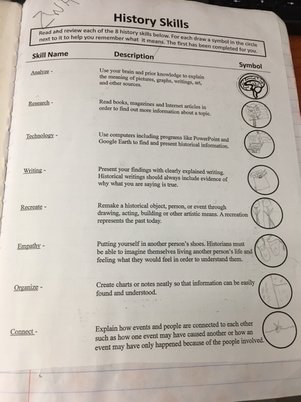
Building Historical Thinking Skills began the first week of school with our first History lesson. We reviewed the importance of understanding what the 8 skills of Historical Thinking are:
1. Analyze- to explain the meaning of various primary sources
2. Research- read magazine and Internet articles to find information
3. Technology- use computers to present historical information
4. Writing- explain your thinking/hypothesis through writing
5. Recreate- remake a historical event through drawing or acting out
6. Empathy- putting yourself in another person's shoes
7. Organize- create charts, notes, and graphic organizers to easily find information
8. Connect- explain how events and people are connected to each other and to today
1. Analyze- to explain the meaning of various primary sources
2. Research- read magazine and Internet articles to find information
3. Technology- use computers to present historical information
4. Writing- explain your thinking/hypothesis through writing
5. Recreate- remake a historical event through drawing or acting out
6. Empathy- putting yourself in another person's shoes
7. Organize- create charts, notes, and graphic organizers to easily find information
8. Connect- explain how events and people are connected to each other and to today
When using the historical thinking chart below, we mainly focused on the variety of questions you should ask when looking at a document or photo.
Historical Investigations
Student Work- Historical Investigation #1- The Lost Colony of Roanoke
Our first historical investigation centered on the fabled "Lost Colony of Roanoke". Our question was, "What happened to the colonists at Roanoke? Historians today still do not know what happened to these early settlers into the country but there are a variety of theories that evidence points to. At the beginning of the lesson, I showed students a video movie trailer of Roanoke to spark their curiosity. Once I had them interested it was a matter of giving them a variety of primary sources in which to gather information to formulate their own theories as to what occurred in their early colony. Along with their partner, students analyzed a variety of primary sources at each station to gather evidence. These sources included drawings, timelines, local witness accounts, diary entries, court documents, letters, records and expert interviews. With a bulk of evidence to support a hypothesis, students were then able to write their own theories about what they think happened to the colonists. This demonstrated to students that many times there is no correct answer to a historical question but just a variety of theories that can only be supported with evidence.
Cooperative Learning Helps to Analyze Historical Documents
I have always tried to use cooperative learning groups as a teacher because our students need to be able to develop adequate social skills to accomplish tasks but it has always been a struggle. Students often complained about their partners and it took me massive amounts of time to pair students up. I wanted to change that. Because historical thinking is very difficult for students to understand, I decided that most activities would require cooperative learning groups. I allowed at the beginning of the school year for students to choose 10 people they would want to work with for the first term (10 for second term) and write those names down on a template. Then each time we needed groups, I would randomly selected a number and that corresponded to who their partner would be for that activity. This strategy made grouping so much easier as a teacher but for my students it gave them ownership.

